DEURO Minting Calculator
Mint DEURO Calculator
Calculate how much DEURO you can mint and how much collateral you need based on the current collateral ratio.
Results
Enter values and click calculate to see your potential DEURO minting results.
Ever wondered how a cryptocurrency can stay tied to the Euro without a bank holding the cash? Meet the Decentralized Euro (DEURO), a stablecoin that promises a 1:1 link to the European Euro while running completely on‑chain.
Quick Take
- DEURO is a stablecoin that aims to keep a 1:1 peg with the Euro.
- It uses overcollateralization - you lock more value in crypto than the DEURO you mint.
- Yield on holdings is currently about 10% APR, paid from borrowers’ stability fees.
- Trade it on decentralized exchanges (DEXs), not on major centralized platforms.
- As of Oct2025, price sits around $1.17USD, market cap $2.93M, and there are 273 verified holders.
How DEURO Keeps the Euro Peg
Unlike USDC or USDT, which keep dollars in a bank, DEURO lives entirely on the blockchain. The magic happens in the smart contracts. These contracts automatically enforce a collateral ratio - typically 150% or higher - meaning you must lock $1.50 worth of Bitcoin, Ethereum or other accepted assets to mint $1.00 of DEURO.
If the value of the collateral drops, the contracts trigger a liquidation. The system sells just enough of the collateral to cover the DEURO in circulation and maintain the 1:1 peg. Because the process is permissionless, no central authority can intervene, and no external price oracle is needed - the contract reads on‑chain price data directly from the collateral token’s market.
Minting and Collateral Mechanics
To create DEURO, you follow three simple steps:
- Connect a Web3 wallet (MetaMask, Trust Wallet, etc.) to the DEURO portal.
- Deposit supported collateral - most users choose Bitcoin (BTC) or Ethereum (ETH) - into the protocol’s vault.
- Based on the live market price, the contract calculates how many DEURO you can mint while respecting the required collateral ratio. You receive the newly minted DEURO instantly on‑chain.
When you’re ready to get your BTC or ETH back, you simply burn the DEURO you minted and the contract releases the collateral. This back‑and‑forth ensures every DEURO token is always backed by locked assets.
Yield for Holders - Where the 10% Comes From
The protocol doesn’t just sit idle. Borrowers who want to mint DEURO pay a stability fee, currently set at about 10% annualised. Those fees are pooled in an equity reserve and redistributed to anyone who holds DEURO in a supported wallet.
In practice, if you keep 1,000 DEURO in a wallet for a full year, you could earn roughly 100 DEURO extra - a rate that outperforms most traditional Euro savings accounts, especially given the low‑interest environment in Europe.
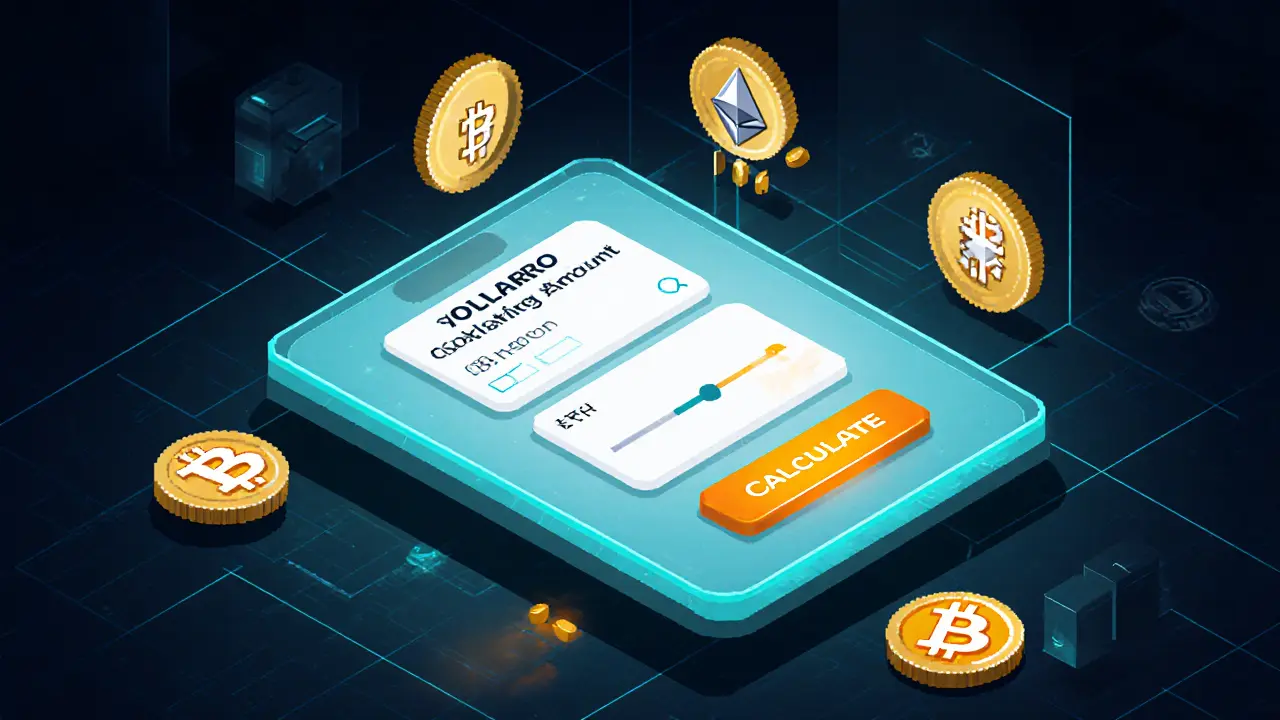
Market Snapshot (Oct2025)
Here’s a quick glance at where DEURO stands today:
- Price: $1.17USD per DEURO
- Market cap: $2.93million
- Total supply: 2.49million DEURO
- 24‑hour volume: $25,094USD
- All‑time high: $3.24 (8Aug2025)
- All‑time low: $0.2501 (22Jun2025)
- Holder count: 273 verified addresses
The token holds rank #1693 on CoinMarketCap, and the volume‑to‑market‑cap ratio is under 0.4%, signalling relatively modest trading activity.
How to Buy and Trade DEURO
Because DEURO isn’t listed on big centralized exchanges like Binance or Coinbase, you’ll need a DEX route. Here’s a typical flow:
- Install a Web3 wallet and fund it with ETH or BTC.
- Visit a supported DEX (e.g., Uniswap, SushiSwap) and search for the DEURO pair.
- Connect your wallet, specify the amount, and confirm the transaction.
- After the trade, DEURO appears in your wallet - you can now hold it for yield or use it as a Euro‑denominated spending token.
Some platforms also let you buy DEURO with a credit card, but the transaction still ends up on a DEX under the hood.
Risks and Considerations
Nothing is risk‑free, and DEURO comes with its own set of challenges:
- Volatility spikes: The token fell more than 60% from its August peak, showing that market confidence can swing wildly.
- Concentrated ownership: With only 273 holders, a few large wallets could move the price significantly.
- Liquidity limits: Low trading volume means larger orders may slip, and exiting a position could be pricey.
- Capital efficiency: Overcollateralization requires you to lock up more crypto than you receive, which can be costly during bear markets.
- Oracle‑free trade‑off: Avoiding external price feeds improves security but restricts the range of assets you can use as collateral.
Always weigh these factors before minting or holding a large amount of DEURO.
How DEURO Stacks Up - Quick Comparison
| Feature | DEURO | USDC | DAI |
|---|---|---|---|
| Peg Currency | Euro (EUR) | US Dollar (USD) | US Dollar (USD) |
| Backing Model | Over‑collateralized, oracle‑free | Fiat reserves in banks | Over‑collateralized, oracle‑driven |
| Yield on Holding | ~10% APR (from stability fees) | None (pass‑through) | Variable (depends on Maker fees) |
| Exchange Availability | DEX‑only (early stage) | CEX & DEX | CEX & DEX |
| Liquidity (24h vol) | ≈$25k | Billions | Hundreds of millions |
The table shows why DEURO feels more like a niche DeFi experiment right now, but its Euro focus and built‑in yield make it attractive for European users looking for on‑chain Euro exposure.
Future Outlook
Analysts predict DEURO could drift toward a price of $1.11 by 2026, aligning more closely with a true 1:1 Euro parity. If European regulators continue to clarify crypto‑friendly rules, adoption could rise, bringing more liquidity and a broader holder base.
For now, the biggest upside is the 10% yield, but the biggest risk remains market confidence - a sudden drop in collateral values could trigger liquidations that erode the peg.
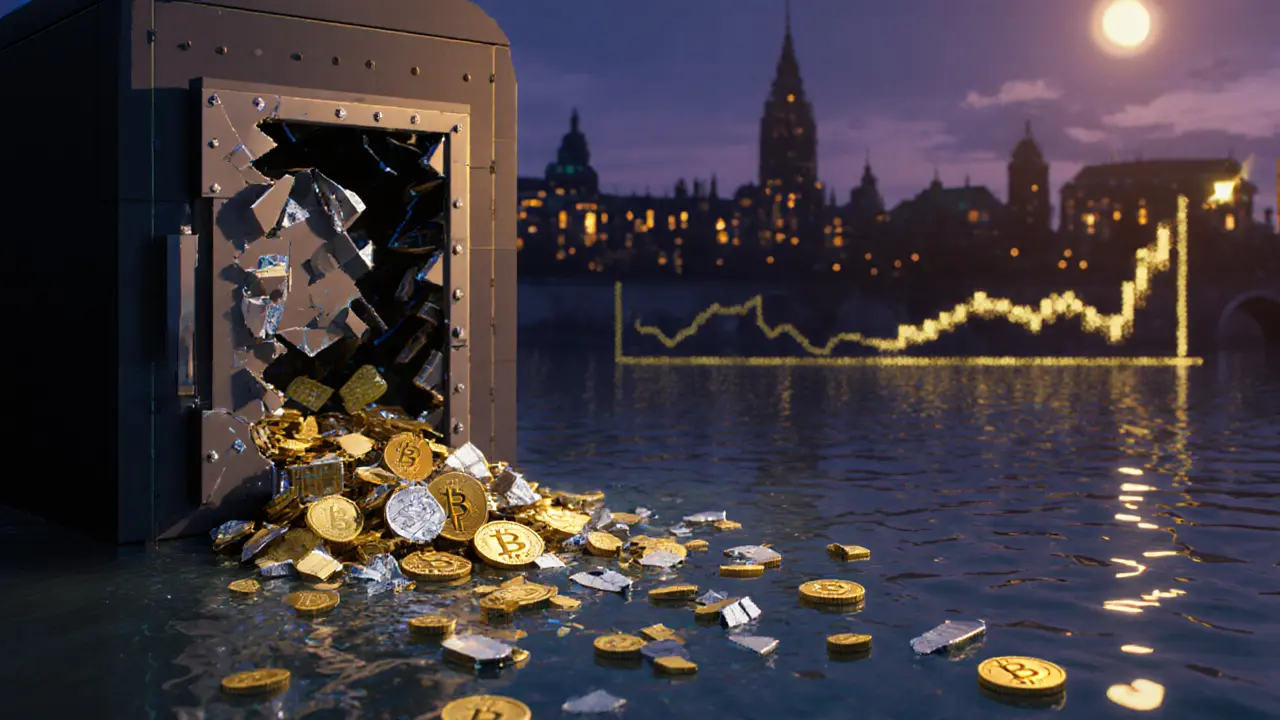
Frequently Asked Questions
What exactly is DEURO?
DEURO is a blockchain‑based stablecoin that aims to stay equal to one Euro. It achieves this by requiring users to lock more valuable crypto assets as collateral before they can mint any DEURO tokens.
How does the overcollateralization work?
You deposit, say, $1,500 worth of Bitcoin and can mint up to $1,000 DEURO if the protocol’s collateral ratio is 150%. If Bitcoin’s price falls, the smart contract automatically sells part of the Bitcoin to keep the system solvent.
Where can I buy DEURO?
DEURO is primarily traded on decentralized exchanges. Connect a Web3 wallet to Uniswap, SushiSwap or a similar DEX, find the DEURO trading pair, and swap your ETH or BTC for DEURO.
Is there any yield for holding DEURO?
Yes. Borrowers pay a stability fee that the protocol redistributes to DEURO holders, currently around 10% APR. The yield is paid in additional DEURO tokens.
What are the main risks?
Key risks include price volatility, low liquidity, concentrated ownership, and the need to lock more crypto than you receive. A sudden drop in collateral value could trigger liquidations that affect the peg.


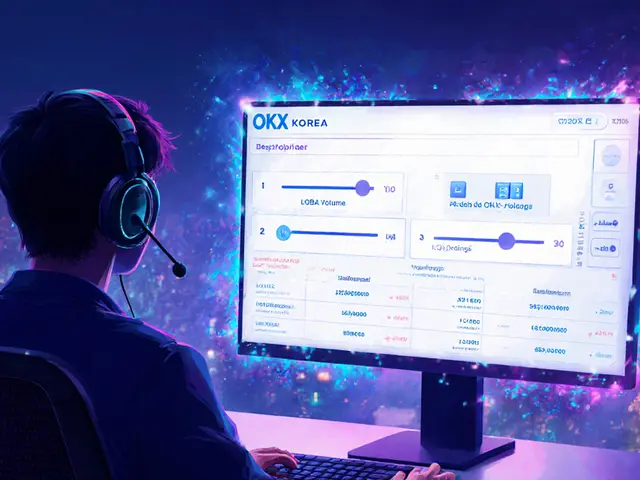

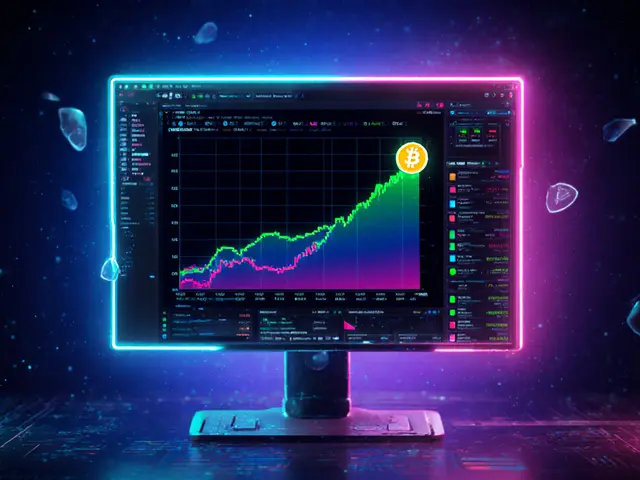
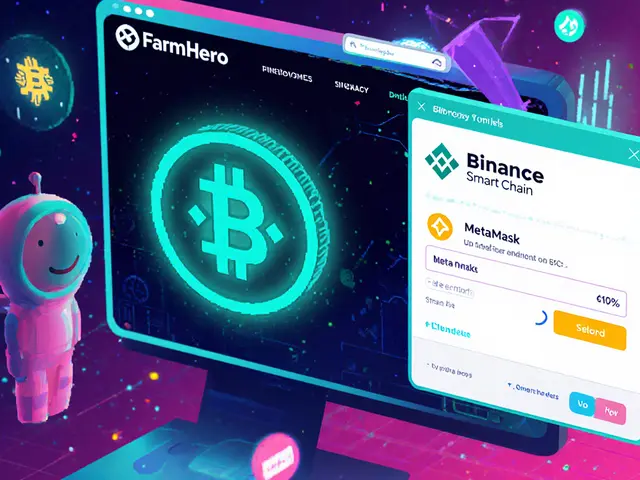
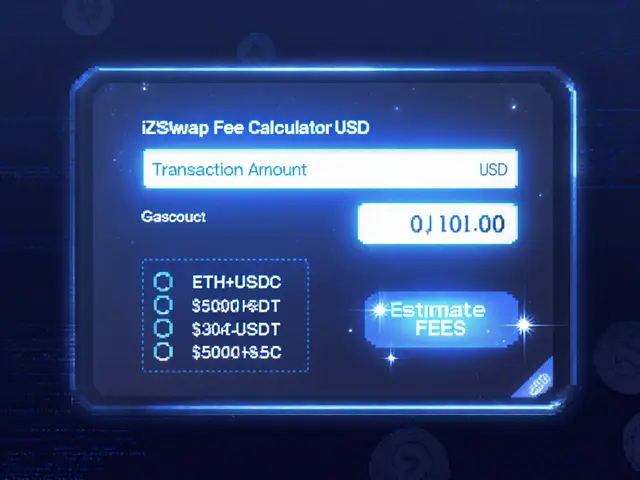
Jayne McCann
July 20, 2025 AT 17:50Sounds like just another overhyped token.
Richard Herman
July 26, 2025 AT 04:23Stablecoins pegged to a fiat currency can offer low volatility, which is useful for daily transactions. The DEURO aims to combine that stability with blockchain transparency. However, every peg still relies on the underlying collateral mechanism and governance. Keep an eye on how the collateral ratio is maintained over time.
Parker Dixon
July 31, 2025 AT 14:56The DEURO minting process requires users to lock up a certain amount of USD‑denominated assets as collateral. As long as the collateral ratio stays above the required threshold, new DEURO can be generated without impacting the peg. If the ratio falls, the system triggers liquidation to protect holders. This design mirrors other over‑collateralized stablecoins like DAI but with a Euro focus. 👍🚀
Stefano Benny
August 6, 2025 AT 01:30Indeed, the protocol leverages a dynamic collateralization engine, adjusting the required over‑collateralization factor based on market volatility metrics. By integrating an oracle network for real‑time price feeds, it mitigates price‑feed attacks. The liquidation module employs a batch auction to maximize recovery rates. 📈💹
Bobby Ferew
August 11, 2025 AT 12:03Oh great, another "innovative" stablecoin that promises peace of mind while secretly banking on speculative hype. The fine print about collateral audits is always conveniently buried. Users end up trusting a black box that could collapse overnight. 🙄
celester Johnson
August 16, 2025 AT 22:36One could argue that the very notion of trust in algorithmic finance reflects a deeper societal shift toward decoupling value from tangible assets. Yet, this abstraction often masks inherent risks that resonate beyond code. It's a paradox of modern economics.
Prince Chaudhary
August 22, 2025 AT 09:10The concept of a Euro‑pegged stablecoin can actually aid cross‑border payments for businesses in the EU, reducing fees and settlement times. Keeping the collateral transparent and auditable will be key to broader adoption.
John Kinh
August 27, 2025 AT 19:43Yeah, but in reality it’s just another way for developers to cash in on hype. 🙃
Jan B.
September 2, 2025 AT 06:16Stablecoins like DEURO need robust legal frameworks to operate smoothly across jurisdictions.
MARLIN RIVERA
September 7, 2025 AT 16:50The regulatory gray area is a ticking time bomb; without clear compliance, the project is doomed to failure.
Debby Haime
September 13, 2025 AT 03:23Let's give the developers a chance to prove their model; community feedback can steer improvements and build confidence.
katie littlewood
September 18, 2025 AT 13:56The idea of a Euro‑pegged stablecoin sparks both curiosity and excitement across the crypto landscape. Imagine being able to remit money across borders without the usual banking fees, all while the value stays anchored to the familiar euro. This bridges the gap between traditional finance and decentralized ecosystems, offering a gateway for everyday users. Yet, the journey from concept to trustworthiness is riddled with technical and regulatory hurdles. First, the collateral framework must be transparent, allowing anyone to verify that enough assets back each minted token. Second, the governance model should empower stakeholders without falling prey to centralization. Third, the oracle infrastructure needs to be resilient against manipulation, as price feeds are the lifeblood of the peg. Moreover, the liquidation process must be swift and fair, preventing catastrophic losses during market turbulence. Community involvement can serve as a watchdog, flagging anomalies before they spiral. Education plays a vital role too; users should understand the mechanics rather than blindly trusting the brand. Partnerships with reputable financial institutions could lend additional credibility, reassuring skeptics. On the flip side, over‑reliance on external partners might introduce new points of failure. The token’s utility-whether for payments, savings, or as a building block for DeFi-will determine its longevity. Market liquidity is essential; without sufficient depth, price slippage can erode confidence. Finally, a clear roadmap and open‑source code foster transparency, inviting developers to audit and improve the system. All these pieces, when aligned, could transform DEURO from a speculative asset into a practical financial tool for millions.
Jenae Lawler
September 24, 2025 AT 00:30While such idealistic visions are commendable, they overlook the inherent inefficiencies of retrofitting legacy fiat constructs onto blockchain. The notion that a token can seamlessly replace conventional euro transactions remains, at best, a theoretical indulgence. Pragmatic considerations demand rigorous scrutiny.
Chad Fraser
September 29, 2025 AT 11:03Hey folks, keep the discussions constructive and remember that every new project starts with a learning curve. We’ve all been there.
Mark Camden
October 4, 2025 AT 21:36It is imperative to recognize that the underlying monetary policy mechanisms dictate token stability far more than community sentiment. A comprehensive analysis should incorporate macroeconomic indicators alongside on‑chain metrics.
Evie View
October 10, 2025 AT 08:10Enough with the sugarcoating; if DEURO can’t prove its resilience, it’s just another scam waiting to explode.
Kate Roberge
October 15, 2025 AT 18:43Honestly, the hype train is already leaving the station and anyone still on board is just feeding the illusion.
Oreoluwa Towoju
October 21, 2025 AT 05:16Encouraging developers to engage with regulators will pave the way for sustainable growth.